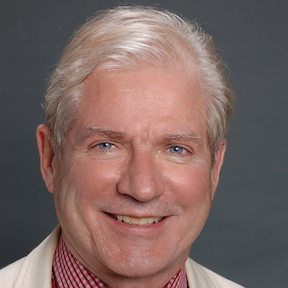 Steven M. Cohen’s Report on the Pew Survey at B’Nai Keshet on January 19, 2014
Steven M. Cohen’s Report on the Pew Survey at B’Nai Keshet on January 19, 2014
The Pew research report A Portrait of Jewish Americans has been eliciting strong reactions from American Jews of all persuasions since its release last October. Those of us who attended Steven M. Cohen’s talk on January 19 at Synagogue B’nai Keshet in Montclair got both a clear summary of the report’s findings and a cogent argument for changes in Jewish social and religious practices that could help reverse the decline in Jewish identity and observance that the report starkly highlights.
Dr. Cohen, currently Professor of Jewish Social Policy at Hebrew Union College, brings a unique perspective to the Pew Report as a both a committed Jew and a practicing sociologist. As a speaker, he comes across as a rare combination of geeky statistician and passionate advocate for change. His dry humor and his knack for drawing surprising observations from the dry data lightened what for many American Jews has become an uncomfortable topic.
Perhaps Dr. Cohen’s least surprising observation based on the Report’s data was that the Orthodox segments of American Jewry are growing rapidly whereas the non-Orthodox segment is declining, leading many to predict that within a generation the American Jewish community may become predominantly Orthodox. This growth is mainly the result of higher birth rates and negligible rates of marriage outside the Jewish and Orthodox community. In this respect, Dr. Cohen points out, non-Orthodox Jews are much like non-Jewish Americans and are not likely to change their ways. What may change is the rate at which Orthodox Jews will leave the confines of Orthodoxy. Dr. Cohen pointed out that Orthodox “immigrants” to Conservative and Reform congregations, committed as they are to community and observance, can be a surprising source of reinforcement for declining non-Orthodox Jewish congregations.
Perhaps the Report’s most uncomfortable findings for most American Jews are the ones that show a sharp and continuing decline in religious identification and practice among non-Orthodox Jews. Although many Jews continue to identify strongly as ethnic and cultural Jews, fewer in each succeeding generation, apart from the Orthodox, consider themselves religious or observe religious customs and ritual. In this, too, American Jews mirror their non-Jewish compatriots, who are also becoming progressively more secular.
Since marriage within the faith remains the best predictor of Jewish identify and observance, some Jews have drawn the conclusion that all Jews should emulate the Orthodox and try to prevent their children from marrying non-Jews. Dr. Cohen was careful to point out that achieving Orthodox rates of in-marriage is an unrealistic goal and that direct pressure on children to marry other Jews is ineffective and even counter-productive. Making every effort to see that our children live among Jews and socialize with Jews is the most effective way to promote in-marriage, more important than Jewish education and training. As Dr. Cohen puts it, “Zip code is the most important predictor of whether someone will marry a Jew.” Living among high concentrations of Jews is also the best predictor of observance and identity among adult Jews, leading Dr. Cohen to make the tongue-in-cheek suggestion that Jews should consider “relocation bonuses” to Jews who move to communities like New York and Los Angeles.
Dr. Cohen did acknowledge the importance of Jewish education, but pointed out that not all forms of Jewish education are equally effective. Jewish day schools, he emphasized, are extremely expensive to set up and maintain and are therefore far less cost-effective than, for example, Jewish summer camps. He also pointed out that few Jewish parents have objections to sending their children to Jewish summer camps whereas many object to sending them to Jewish days schools, even at no cost. He illustrated this point using a hypothetical Jewish billionaire presented with the choice between a single Jewish day school facility and ten more effective summer camps.
Perhaps the Pew Report’s most depressing findings involve the rates at which succeeding generations of children of intermarried couples identify themselves as non-Jews. Like many other observers, Dr. Cohen believes that, given the near-inevitability of ever-increasing numbers of Jews marrying outside the faith, more effort should be made both to increase the number of converts and to involve non-Jewish spouses in the life of the Jewish community. Since converts account for fewer than two percent of American Jews, Dr. Cohen suggested that easing the path to conversion might produce worthwhile results. One of his novel proposals was that non-Jews preparing to marry should be offered immediate conversion, based on a commitment to continue their Jewish education following marriage.
Unlike many observers of the Jewish community, Dr. Cohen retains an optimistic outlook on the future of Jews in America and is not at all resigned, as some are, to the inevitability of a shrinking Jewish population that will become predominately Orthodox. His proposals for encouraging Jewish identity and observance deserve careful attention.
- My Memories of Toby Stein - Tue, Feb 6, 2024
- The Search for Spock at Congregation Shearith Israel - Thu, Mar 26, 2015
- To Begin Again–a Poem - Mon, Feb 2, 2015
